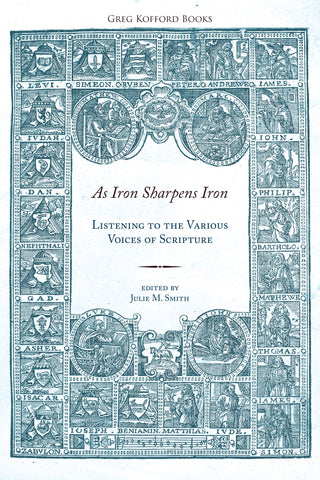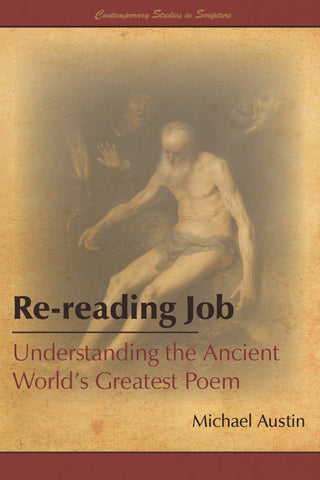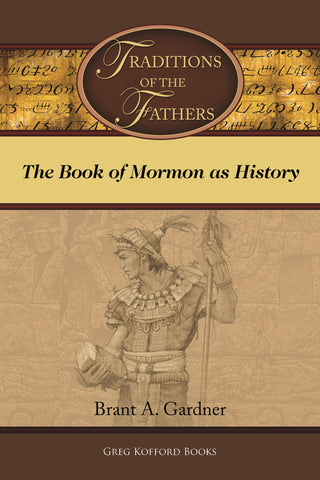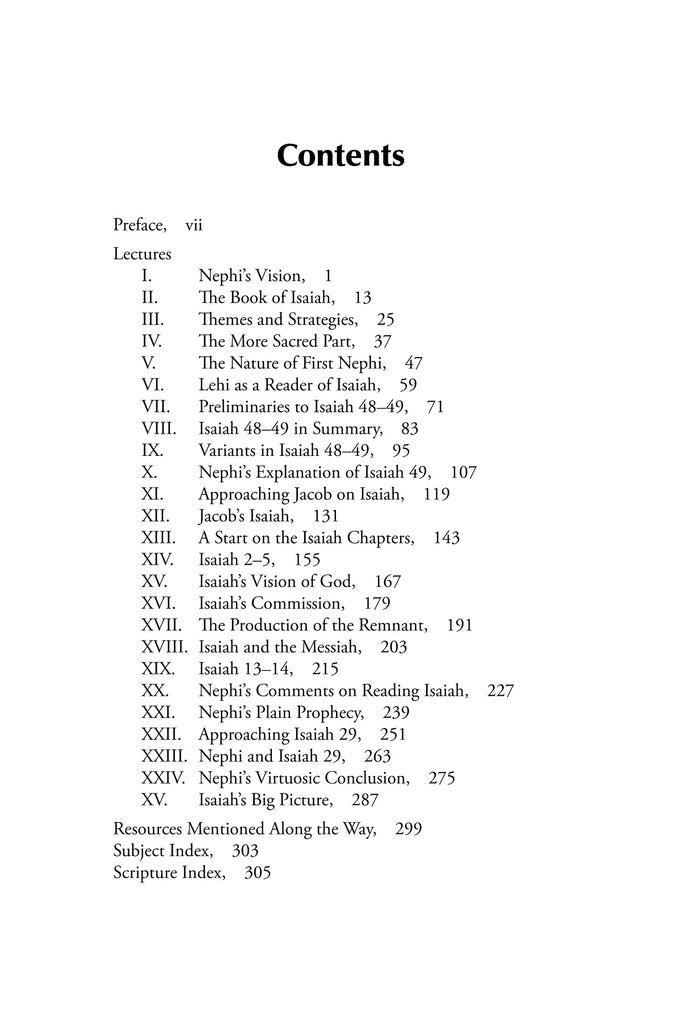The Vision of All: Twenty-five Lectures on Isaiah in Nephi’s Record
$25.95
- “This book needs to be on the shelf of every serious Book of Mormon student.” — Nicholas J. Frederick, Brigham Young University
- “Spencer is one of the most careful readers of scripture in Mormon Studies and this book puts his skill on full display.” — Worlds Without End
- “This book is remarkable. We’ve never seen anything quite like it in the history of Mormonism.” — By Common Consent



Available in ebook for Kindle, Nook, Apple, Google Play, and Kobo.
Also available through Amazon and Deseret Book.
Download a free sample preview.
Part of our Contemporary Studies in Scripture series
Book Description:
In The Vision of All, Joseph Spencer draws on the best of biblical and Latter-day Saint scholarship to make sense of the so-called “Isaiah chapters” in the first two books of the Book of Mormon. Arguing that Isaiah lies at the very heart of Nephi’s project, Spencer insists on demystifying the writings of Isaiah while nonetheless refusing to pretend that Isaiah is in any way easy to grasp. Presented as a series of down-to-earth lectures, The Vision of All outlines a comprehensive answer to the question of why Nephi was interested in Isaiah in the first place. Along the way, the book presents both a general approach to reading Isaiah in the Book of Mormon and a set of specific tactics for making sense of Isaiah's writings. For anyone interested in understanding what Isaiah is doing in the Book of Mormon, this is the place to start.
AuthorCast Interview with the Author:
Comprehensive Table of Contents:
.
Preface
1. Nephi’s Vision
Two Reactions to Isaiah
Nephi Sees a Book
The Gentiles and the Book
Great and Abominable
The Book in the New World
2. The Book of Isaiah
Nephi’s Motivations
The Book of Isaiah
Two Halves of Isaiah
Skepticism about Scholarship
3. Themes and Strategies
The Theology of Isaiah 1–39
The Remnant
The Theology of Isaiah 40–55
Strategies for Reading
4. The More Sacred Part
Matters of Structure
Dividing Nephi’s Record
More and Less Sacred Parts
The More Sacred Part
5. The Nature of First Nephi
Why First Nephi?
Two Halves of First Nephi
Original Chapter Breaks
Two Stories in 1 Nephi 1–9
Parallels in 1 Nephi 10–22
Anticipating Second Nephi
6. Lehi as a Reader of Isaiah
A Primer on Reading Isaiah
Comparative Study
Lehi Reads Isaiah 40:3
Lehi Reads Isaiah 14:12
7. Preliminaries to Isaiah 48–49
Summary and Synthesis
Distinct Approaches to Isaiah 48–49
The Abrahamic Covenant
8. Isaiah 48–49 in Summary
Isaiah 48 in Summary
Isaiah 49 in Summary
9. Variants in Isaiah 48–49
Variants in Book of Mormon Isaiah
Variants in Isaiah 48
Variants in Isaiah 49
10. Nephi’s Explanation of Isaiah 49
Focus on Likening
Isaiah’s Scope
Isaiah 29 in 1 Nephi 22
Isaiah and World History
Isaiah 49 in 1 Nephi 22
11. Approaching Jacob on Isaiah
Recapitulation
Motivations for Including Jacob
Jacob’s Sermon in 2 Nephi 6–10
Another Approach to Likening
12. Jacob's Isaiah
An Emphasis on Jewish History
Jacob on the Gentiles
Jacob’s Likening of Isaiah 49
Isaiah 50–51
13. A Start on the Isaiah Chapters
Turning to the Isaiah Chapters
Chapter Breaks in 2 Nephi 11–24
Notes on 2 Nephi 11
The Covenant’s Fulfillment
14. Isaiah 2–5
Isaiah’s Present and Future
Consequent Judgment
War and Women
A Remnant Delivered
The Song of the Vineyard
Israel’s Sin
15. Isaiah’s Vision of God
The Place of Isaiah 6
A Remnant Story
Paradigmatic Experience
The Throne Room
Day of Atonement
Isaiah’s Lips
16. Isaiah’s Commission
A Paradoxical Task
Reconstructing the Text in the Book of Mormon
Variants in Isaiah 6
The Holy Seed
17. The Production of the Remnant
The Syro-Ephraimite Crisis
Isaiah’s Faithless Contemporaries
Survival of the Remnant
18. Isaiah and the Messiah
The Question of Messianic Texts
What Is a Messiah?
Nephi and the Messiah
The Virgin’s Son
A Child Is Born
The Branch
19. Isaiah 13–14
A Focus on Babylon
Babylon’s Demise
Israel’s Redemption
The Fallen King
Three Branches
Babylon’s Remnant
20. Nephi’s Comments on Reading Isaiah
What Nephi Doesn’t Do
Words that Aren’t Plain
The Spirit of Prophecy
Repetition and Expostion
The Last Days
21. Nephi’s Plain Prophecy
Nephi’s Summary of Isaiah 2–14
Nephi’s History of the Jews
Puzzles about Nephi’s Interpretation
22. Approaching Isaiah 29
Nephi and the Remnant
Oddities about Isaiah 29
A Variety of Approaches to Isaiah 29
Isaiah 29 and Isaiah 8
Nephi and Isaiah 29
23. Nephi and Isaiah 29
Outline of Nephi’s Uses of Isaiah 29
Isaiah 29:3–5
A Book and Its Words
Nephi’s Care with the Text
24. Nephi’s Virtuosic Conclusion
Nephi as Exegete
Isaiah in 2 Nephi 28–30
Concatenating Isaiah 11, 29, and 49
25. Isaiah’s Big Picture
Isaiah Is the Point
Isaiah Has Many Meanings
Isaiah Is Systematic
Isaiah’s Theme Is Covenantal
Nephi Models a Careful Reading of Isaiah
The Significance of Variants
Isaiah’s Big Picture
Inconclusive Conclusion
Resources Mentioned Along the Way
Subject Index
Scripture Index
Q&A with the Author:
.
Q:How and when did you begin to recognize the need for a different approach to studying the Isaiah sections in the Book of Mormon?
A: Well, I've always been overconfident about what I might be able to accomplish, so I first decided to tackle Isaiah in earnest when I was a teenager. Of course, I understood little, because I knew no real resources. I read carefully through the King James Version of the text, and I followed every footnote in the LDS edition. I spent a whole summer doing that, and I gained little more than some familiarity. I turned to Isaiah again shortly after my mission, when I was taking an introductory course on Hebrew. Studying straight from the Hebrew, using dictionaries and a few other tools, I felt like I came to understand the text a bit better, though I only worked at the time through about five chapters of Isaiah. At about the same time, I discovered a few other scholarly resources, especially the old FARMS volume Isaiah in the Book of Mormon. Those helped orient me in Isaiah's world a bit better, but I wasn't yet doing the sort of thing I've come to do now.
What changed things was twofold. First, my wife, Karen, and I were studying First Nephi, and we struck on some structural features of Nephi's record that make clear he means to emphasize Isaiah above all else in his record. (I've talked about these structural features in my books.) That spurred me to give closer attention to Nephi's treatment of Isaiah than I had before. Up to that point, I'd tried only to approach Isaiah on his own terms, using just a few scholarly resources. But stumbling onto the idea that I could see how Nephi reads Isaiah fired me up. And it got me more interested than before in understanding Isaiah on his own terms as well. I figured that understanding Isaiah himself would allow me to see how Nephi was using him in his own inventive ways. So I began, finally, to read the massive scholarly literature on Isaiah. Second, I was asked to teach early-morning seminary one year, while we were living in Oregon. The course of study was the Old Testament, and I asked for permission to focus the whole year just on Genesis, Job, and Isaiah. The bishop granted it, and so I worked with my students all the way through Isaiah for three months. In preparation for each class discussion, I did nothing but read commentaries, and then we came together and just wrestled with the text of Isaiah. By that point, I was finishing work on my first book, An Other Testament, which is largely about how the Book of Mormon handles Isaiah, so working carefully through every line of Isaiah with my students helped me to see even better how inventive and interesting Nephi is in his reading of Isaiah.
So I suppose it's been a circuitous path. The short answer is that it was only when I saw (a) that Nephi really means to privilege Isaiah and (b) that he deliberately reads Isaiah in his own way that my project began to take shape.
Q: In what ways does Nephi use Isaiah inventively? And how might his usage differ from scholarly consensus on Isaiah's original intent?
A: On my reading, Nephi explicitly tells his readers that he's reading Isaiah inventively. I believe this is what he tries to signal with the word "likening" (see, for example, 1 Ne. 19:23). He sees Isaiah's prophecies as having a meaning of their own, which we might call their immediate meaning. But then he sees the possibility of finding in Isaiah's prophecies a basic pattern that's replicated in Israel's history at times and in places where Isaiah wasn't himself focused. This is clearest when he applies prophecies from the Book of Isaiah, which in their biblical context are clearly about the return of exiled Jews from Babylon during the sixth century before Christ, to things he sees in vision regarding Lehi's descendants in modern times. He explicitly recognizes that passages from Isaiah have their natural fulfillment in the return of Jews from exile to the land of Judah, but then he suggests that the same passages can be likened to the return of latter-day Lamanites to the gospel of Christ their ancestors knew. He seems to see Isaiah as outlining patterns of how God works with Israel, whether in whole or in part, whether anciently or in modern times, again and again. And so he sees the possibility of adapting Isaiah texts to events that arguably outstrip the straightforward meaning of those texts. That is, I think, a rather responsible (because self-aware) form of inventive interpretation.
Of course, such an approach to the Book of Isaiah differs drastically from the kinds of approaches on offer in scholarly work on Isaiah today. For one, Nephi asks a rather different set of questions about Isaiah than do modern scholars. Academic work on Isaiah aims at reconstructing the historical origins and context of the Book of Isaiah, as well as the processes through which what originated with Isaiah came to have the shape we're familiar with from the Bible. Nephi isn't at all interested in these questions. He's apparently familiar with the basic, straightforward historical meaning of prophecies in the Book of Isaiah, but he moves pretty quickly beyond such meanings to explore other possible meanings and applications. Further, though, there are many other ways Nephi seems to differ from the conclusions of modern scholarly work on Isaiah. For instance, he clearly regards the whole of Isaiah 2–5 as a larger unit of text (as can be seen from connecting words and original chapter breaks in the Book of Mormon), but most interpreters today regard those chapters as divisible into at least two larger units (Isaiah 2–4 and Isaiah 5, for example). That only scratches the surface, of course. There are still larger issues of conflict between the way Nephi (or really, the Book of Mormon quite generally) handles Isaiah and the conclusions drawn by modern scholarship, but that would take some work to develop.
Q: How does The Vision of All negotiate this sometimes tense or conflicting terrain of modern scholarship and a more philosophically-grounded reading of Isaiah?
A: First and foremost, I think it's important just to make clear that there are various ways of reading Isaiah, and that Nephi acknowledges the uniqueness of his approach. We're far too prone as Latter-day Saints to think that there's one correct answer to questions about the meaning of a passage of scripture. We tend to think that we're done with a text once we know the "right" interpretation. And, in many ways, that's mirrored in modern scholarship, although modern scholars come up with a very different set of answers about the meanings of Isaiah's writings. The result is that too many academics think that average believers (Mormon or otherwise) simply get scripture wrong, and average believers return the compliment by claiming that scholars in turn get scripture wrong. What Nephi teaches us, I think, is that a given passage of scripture can have a variety of meanings and applications. Meaning is dynamic and contextualized by the act of reading. The result is that there's more a history of interpretation than there's a definite meaning for any particular passage or text. In Nephi's writings we can glimpse Lehi's approach to Isaiah, and it's quite different from Nephi's. And then he sets his own interpretations side by side with Jacob's, which are similar but far from identical. Even within just the sermon Nephi quotes from Jacob in 2 Nephi 6–10, we can track two rather different interpretations of one and the same passage (Isa. 49:22–23).
Just getting clear about all this can help us to feel a good deal more at home with Isaiah. Our job isn't to figure out the one true meaning of Isaiah, but to let Isaiah's words work on us. They provide us with patterns and images, relationships and themes. Our task is to dwell in the text and to let it begin to shape the way we see things. We won't be able to do this very well if we don't become familiar with the range of meanings the text can accommodate. So we ought to read Isaiah scholarship to become familiar with historical reconstructions of Isaiah's (apparent) original meaning. In fact, it's important to read some of this scholarship just to become familiar with the fact that no two interpreters agree on Isaiah's meaning. There are key passages in Isaiah that are literally interpreted in a dozen different ways by major modern interpreters. And then it'd be helpful for us if we became more familiar with the history of interpretation of Isaiah. How have Jews read Isaiah 53? Do different sorts of Christians read Isaiah 11 in different ways? How does a Seventh-day Adventist read Isaiah's references to the remnant by comparison with a mainline Protestant? And then how might we, as Latter-day Saints, find meaning in Isaiah? These are questions that go a good deal further than I ever do in The Vision of All, but I try in the book to open the way to these kinds of approaches, since I argue that Nephi does something like this in his own context.
Q: Can you give us a concrete example of a passage that Latter-day Saints may be prone to interpret a specific way, but which consideration of other interpretations, both within modern scholarship and other religious traditions, may be beneficial?
A: It's probably easiest here just to begin with an example that's decently known already. Most Latter-day Saints are familiar with those passages in Isaiah that play a prominent role in Handel's Messiah. "Behold, a virgin shall conceive, and bear a son, and shall call his name Immanuel" (Isa. 7:14). "For unto us a child is born, unto us a son is given: and the government shall be upon his shoulder: and his name shall be called Wonderful, Counsellor, The mighty God, The everlasting Father, The Prince of Peace" (Isa. 9:6). These kinds of passages are generally understood by average Mormons to be straightforward prophecies of Jesus Christ's birth. Modern scholars, however, generally read these passages in a fundamentally different way, say, as prophecies concerning events that were to happen within Isaiah's own lifetime. Some familiarity with the history of Jewish interpretation also helps to reveal how differently these texts can be read. Even many modern Christians, usually in mainline Protestantism, don't read these passages as direct references to Jesus Christ. It turns out that there are many different ways of making sense of these texts. They can be read as predictions of Jesus's birth. But they can also be read in many other ways, often informatively. Now, I don't mean to suggest that the other ways are necessarily the best ways. They may or may not be. But any reading of these passages will be stronger and more interesting if it acknowledges that it approaches the text from a certain perspective, from the perspective of a certain faith.
And really, that's what matters here, I think. When I say that we can benefit from familiarity with the ways that other traditions or modern scholars read certain passages of Isaiah, I mean that we can grow out of the naive assumption that there's only one possible way to understand a text (an assumption that too easily leads us to think that everyone who doesn't see things our way is simply stupid), and we can grow into a recognition that our readings are rooted in our own system of beliefs. I might put that another way: we can grow out of the naive idea that our interpretations of Isaiah are a matter of straightforward knowledge, and we can grow into the deeply mature realization that our interpretations of Isaiah are a matter of invested faith. Now, I suspect that most who become a bit more familiar with the variety of interpretations of Isaiah will come to interpret some of the texts in a new way. I certainly have as I've studied. And that's good, I think. But I think also that the best readers will also find reasons to defend uniquely Mormon interpretations of many passages of Isaiah, even while recognizing that those interpretations are rooted in a very specific perspective of faith. Why shouldn't we grow all the fonder of interpretations that grow directly out of our faith commitments, even as we recognize that the text can be read in many ways? I think we should, that we should feel free to defend an understanding of Isaiah that's informed by other traditions and scholarly work but that's simultaneously rooted in the Restoration.
Q: Switching topics, let's talk about the style of the book: The Vision of All is laid out as a series of twenty-five classroom-style lectures. Give us some insight into your decision to use this approach and if it had any precedent that inspired you.
A: A few things came together that led me to do the book this way. First, over the past few years, I'd begun to write some of my public presentations in this style, instead of always delivering a more formal or finished paper. I found I really enjoyed the writing process of producing something less formal, something where I don't have to tie up every loose thread and can focus on rhetorical delivery. Experimenting with that form of writing got me thinking. Second, I'd begun teaching courses on the Book of Mormon at Brigham Young University, and I'd found that students responded very well to my lectures on the Isaiah material. These weren't written up even in an informal style, but I began thinking that the sort of presentations I was making in the classroom with Isaiah might be more accessible to Latter-day Saints in general. Finally, I've been working steadily on Isaiah in the Book of Mormon for more than a decade now, and I began to think that I had too many ideas piled up in my head that really needed to be put in writing in some form or another, and writing up popular lectures would allow me to work quickly. These all came together at once, and so I began writing the book, one lecture a week.
In writing the book, I didn't try to follow any particular precedent. At the same time, I thought often while I was writing the book about a few similar projects. I thought sometimes about Hugh Nibley's four volumes of lectures on the Book of Mormon, which are literal transcripts of a four-semester honors course he taught on the Book of Mormon at BYU. I haven't read or watched all of those lectures, but certainly some of them, and I often thought about him providing a kind of example of something useful. Of course, my style in the lectures is quite different from Nibley's. Nibley largely began at one end of the Book of Mormon and worked his way to the other end, and he didn't always seem to have a sense of what he wished to accomplish in any given hour of lecture. I tried to impose a larger architectonic on the project, and I tried to assign myself several specific tasks in each lecture. But then, like Nibley, I let the time limits (or really, for me, word limits) decide where I had to stop. And so a lot of the lectures wrap up with overly quick summations of things. But that's meant to give readers a feel for how much more needs to be said than can be said about the subject of Isaiah in the Book of Mormon. I hope it's effective.
Q: Final question: Where do you hope your readers will go from here in their study of Isaiah?
A: I hope they'll start studying Isaiah on their own! Really, I hope the book itself makes clear that I want readers to take this just as a primer, a way of getting started. A recent review of The Vision of All criticized it because many of the lectures end with something like "Ack! We're out of time! We can't really tie up all these loose ends or get into everything we'd like!" The reviewer suggested that I was unwilling to write an extra thousand words to tie all the loose ends together, or that I was too lazy to work my way toward appropriate conclusions. But the fact is that I deliberately wrote the lectures this way. I want readers to feel how much work needs to be done, and I want them to feel responsible for that work. I want them to see how we might go about working on Isaiah in the Book of Mormon, but I want them to know that I can't and won't do all that work for them. Neither I nor anyone else is going to write the book that sorts out everything important that needs saying about Isaiah in the Book of Mormon. But there's a danger in writing scholarly books, a danger that readers might think that reading the scholarly book is all that's needed. So I wanted to write a book that does scholarly work and nonetheless makes perfectly clear that it just points in the right direction, rather than travels the whole length of the road to its ultimate destination.
I'd love to see dozens, hundreds, even thousands of Latter-day Saint readers of Isaiah, scholarly and not. We of all people ought to be invested in making sense of Isaiah's writings. Perhaps I could even wish for the emergence of a marked Latter-day Saint approach to Isaiah, one that becomes recognized as uniquely Mormon and worthy of interest from outsiders. I'd love to see that Latter-day Saint reading be profoundly responsible academically, fully informed about the best scholarly literature. But I'd love just as much to see that Latter-day Saint reading be deeply invested in the unique faith claims of the Restoration, deeply rooted in faithfulness to what Mormonism claims about the world. Our own unique scriptures ask us to take Isaiah seriously, but we tend to leave that task to scholars whose writings we can barely understand or to oddball amateurs who borrow their interpretations from the fundamentalist Christian tradition. What if we began to work on Isaiah in a way that didn't ultimately feel it necessary to conform to every scholarly conclusion (while nonetheless being aware of them) but also didn't look like wacky esoteric speculation? I think we could forge an interpretive tradition that could speak to the world.
Praise for The Vision of All:
“Joseph Spencer uses a lecture style to gently ease his readers into what many Book of Mormon readers fear the most—Isaiah. Spencer’s approach carefully replaces the fear with understanding, elucidates textual complexities, examines scholarly issues, and is remarkably helpful in showing his readers how and why we should care deeply about the presence of this Old World prophet in our New World scripture.” — Brant A. Gardner, author of Traditions of the Fathers: The Book of Mormon as History
“With this book, Joseph M. Spencer has accomplished a remarkable feat. He has produced a reader-friendly, engaging study of the writings of Isaiah in the Book of Mormon that makes Isaiah accessible without overly-simplifying his theology and message. After reading Spencer’s book, Latter-day Saints will more fully understand why Nephi devoted so much of his life and writings to Isaiah and why Jesus expressed to the Nephites that ‘great are the words of Isaiah.’ This book needs to be on the shelf of every serious Book of Mormon student.” — Nicholas J. Frederick, Assistant Professor of Ancient Scripture, Brigham Young University, author of The Bible, Mormon Scripture, and the “Rhetoric of Allusivity”
“Spencer is one of the most careful readers of scripture in Mormon Studies and this book puts his skill on full display. . . . The Vision of All is easily one of the best books in the genre.” — Walker Wright, Worlds Without End
“Make no mistake: this book is remarkable. We’ve never seen anything quite like it in the history of Mormonism. And once you’ve seen it, you’ll wonder what on earth we have been doing for the past 200 years.” — Adam S. Miller, author of Future Mormon and Rube Goldberg Machines
“Spencer, a Visiting Assistant Professor of Ancient Scripture at BYU, has done the impossible: he has made me want to read Isaiah.” — Steve Evans, By Common Consent
“Within the pages of The Vision of All can be found both brilliant insight and moments of illumination, both of which make it a memorable read.” — Cheryl Bruno, Association for Mormon Letters
“From topics small to big, Spencer makes Isaiah's writings accessible to LDS Church members who may have had difficulty with the chapters. Spencer's instructive yet conversational style of writing endears readers to a tough subject without boring or intimidating them.” — Tara Creel, Deseret News
“Spencer has produced by far the most helpful examination of the theological significance of Isaiah within the Book of Mormon. . . . In the emerging field of distinctively theological readings of the Book of Mormon, Joseph Spencer has made a major contribution, suggesting that conversations about the Book of Mormon are far from over.”
— John Christopher Thomas, Journal of Book of Mormon Studies
About the Author:
 Joseph M. Spencer is visiting assistant professor of Ancient Scripture at Brigham Young University. He's the author of An Other Testament (Maxwell Institute Press, 2016) and For Zion: A Mormon Theology of Hope (Greg Kofford Books, 2014). He currently serves as the associate director of the Mormon Theology Seminar and as an associate editor of the Journal of Book of Mormon Studies. He and Karen, his wife, live with their five children in Provo, Utah.
Joseph M. Spencer is visiting assistant professor of Ancient Scripture at Brigham Young University. He's the author of An Other Testament (Maxwell Institute Press, 2016) and For Zion: A Mormon Theology of Hope (Greg Kofford Books, 2014). He currently serves as the associate director of the Mormon Theology Seminar and as an associate editor of the Journal of Book of Mormon Studies. He and Karen, his wife, live with their five children in Provo, Utah.
More Information:
322 pages
ISBN 978-1-58958-632-1 (paperback); 978-1-58958-633-8 (hardcover)
Published October 2016









Share this item: